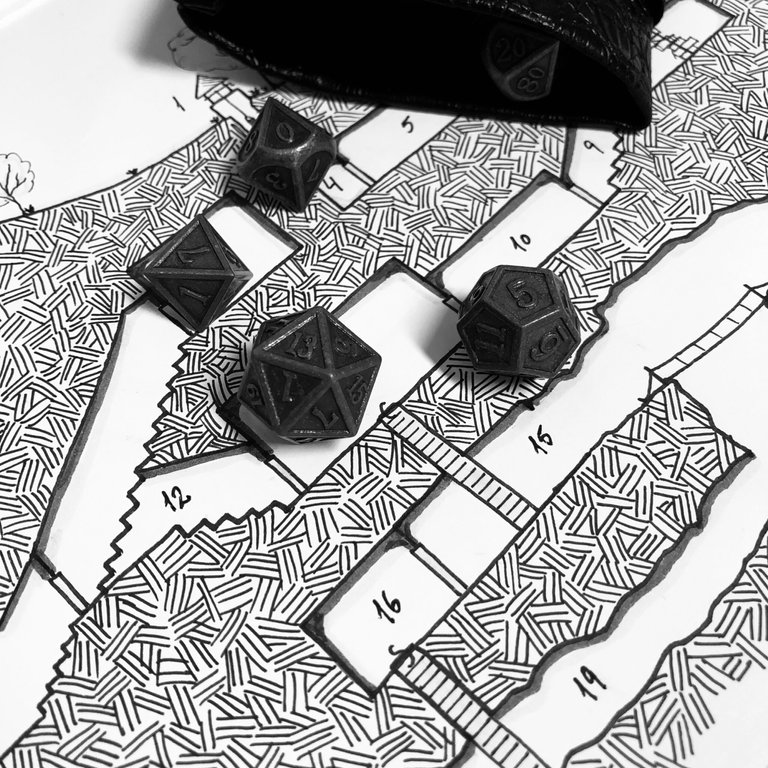
I have been playing some old school role-playing games lately, and I really enjoy them being exactly that: role-playing games. Not 'roll playing' games. The idea that player skill is weighted higher than character skill and that being clever and describing your character's actions can get you out of sticky situations. This has shown to have its downsides for some players though, as they have become accustomed to more modern systems that use dice rolls for nearly all actions. Each type of system has its pros and cons, and in the end, it all comes down to what the players are comfortable with.
In my attempt to get players into the old school type systems, I have been met with the question: "How do I know if my character succeeds at this?". My reply has been, that I will make a ruling depending on how they describe the situation, but for some players, this is simply not good enough, as they feel there is a disconnect between their character abilities and what they are actually capable of.

Do you enjoy rolling dice?
Because of the openness to modification, the old school systems allow me to implement solutions to this problem for my players. Having done some research on the matter, I have found 4 different methods I liked, that can be implemented.
Use these methods as you wish, though I do recommend only using them when there is an uncertainty that cannot be decided through role-playing that would have a seriously detrimental effect on your players' characters.
Method 1 - 1d6
The chance of success is 1 in 6. In other words, roll a 1d6 and if the result is a 1, it's a success.
A variation can be to add the characters ability modifier to the result, e.g. +1, +2, etc.
Method 2 - d20 Below
Probably the simplest method I have found yet. Roll a d20. If the result of the roll is equal to or under the ability score, it's a success.
A variation of this can be to add or subtract the ability modifier to the target score.
Method 3 - Hacked SIEGE
This one takes inspiration from Troll Lord Games' SIEGE Engine, used in systems such as Castles & Crusades, and can be seen as a light version of such.
The premise is quite straight forward. Have a base target score for all rolls. Let the player roll a d20, adding their modifier and level to the result in an attempt to beat this target.
The target value can be modified based on the difficulty of the task, both positively and negatively from 0 to 6 - granted a positive increase of the target value is usually preferable as to not make the challenge too easy.
Method 4 - nd6
This method is based on the probability of outcome depending on the amount of d6's you chose. In essence, it is the same as method 2. Roll an amount of d6's and attempt to hit equal to or under the ability score.
The catch is, the more dice you add, the harder it will be to get results under the ability scores due to the bell curve distribution. You can read more on this at https://faustusnotes.com/2012/01/06/some-calculations-of-dice-pool-probabilities/.
Which To Chose?
I was stuck with this question in my head for quite some time, and I must admit, I never found a correct answer. It all depends on when and how you want to use these methods, if at all. After all, it's your game.
My only advice is: If you are going to use a method, then pick one and stick with it for the duration of your campaign, so your players have some sort of consistency.
Posted from my blog with SteemPress : https://fabledfriends.live/check-your-abilities/
Congratulations @vjalmr! You have completed the following achievement on the Hive blockchain and have been rewarded with new badge(s) :
You can view your badges on your board And compare to others on the Ranking
If you no longer want to receive notifications, reply to this comment with the word
STOPTo support your work, I also upvoted your post!
Support the HiveBuzz project. Vote for our proposal!
I think the popular D&D 3.5, 5E, and others in between or after AD&D use that Siege principle then, right? I'm used to that and it doesn't really need any change for me since...rolling is not the most important part. I tend to improvise a lot when guiding the game.
Those systems use a d20 based difficulty check system. Basically the task at hand is given a Challenge Rating (CR) by the DM which the player then rolls a d20 for, adding or subtracting the modifier for a specific skill.
The SIEGE engine on the other hand is used in games such as Castles & Crusades.
Improvising is great! I still need a lot of work on that.